Saddle Mountain is a fantastic Lake Louise hike, and one of my favourite hikes in Banff. Offering jaw-dropping views of Mt Temple and into the Paradise Valley, as well as a stunning panorama of mountains stretching up and down the Bow Valley, it’s surprising how little work is required to bag this peak.
I visited Saddle Mountain during the height of larch season, when the park’s larches all turn brilliant gold before dropping their needles for the winter, and when the park’s trails fill up with hikers and instagrammers eager to see the colourful show. Despite how busy many of the Lake Louise hikes were at this time, I barely had to share the trail with anyone else while hiking Saddle Mountain.
The trail starts from the Lake Louise lakeshore and steeply heads up to Saddleback Pass between Saddle Mountain and Fairview Mountain. The top of the pass is for many people a destination in itself thanks to the brilliant larch forest there. It’s at the top of the pass that the official trail ends, but a social trail leads up some fun scrambling up the bouldery side of Saddle Mountain. From Saddleback Pass the summit of Saddle Mountain seemed high up out of reach still, but I was so distracted by the incredible views and the fun easy routefinding that it felt like I was at the summit in a matter of minutes.
I highly recommend Saddle Mountain for those looking for a little more adventure than your standard on-trail hike, without being too arduous as far as distance or elevation gain.
Continue reading this blog post for everything you need to know to experience the Saddle Mountain hike near Lake Louise in Banff for yourself, including distance, elevation gain, how to get there, the best time to visit, and lots of photos of my experience.

Note: The Saddle Mountain hike is located in Banff National Park, meaning that a valid park pass is required. Day passes can be purchased at the park gates and are per day per person, but if you’re staying a week or longer, it’s more cost-effective to just buy an annual pass instead.
Before visiting Banff National Park it’s essential to read up on the Parks Canada rules that must be followed to avoid tickets and/or fines. When hiking it’s important to avoid harmful practices such as disturbing plants or rock-stacking, or removing any natural object from flowers to rocks, as it’s important to leave the environment as natural as possible for the animals and for fellow hikers to enjoy in perpetuity. As many flowers as there are, there are few enough that if we all took one, then there wouldn’t be any left. If you’re after a souvenir to take home with you, there are tons of gift shops in the Banff townsite to check out. Otherwise take only photos, leave only footprints.
If you haven’t heard of Leave No Trace principles, they’re also really essential to read up on before heading anywhere into the outdoors in general. Following these important principles basically means doing your best to leave beautiful places like Saddle Mountain as good (if not better) than you found them, both for their preservation and for the enjoyment of other visitors.

Saddle Mountain round Trip Details
Distance: 9 KM / 5.6 MI
Elevation Gain: 656 M / 2152 FT
Hiking Time: 4 HRS
Hiking & Safety Tips
- Prepare for the possibility of wildlife encounters. Bear spray is a must whenever travelling in bear country, as well as learning how to use it. Though your chance of an aggressive bear encounter is low, it is always better to be prepared with bear spray. Bear bells are proven to be an ineffective bear deterrent, and are actively discouraged by Parks Canada. The best way to let bears know you’re around is simply to use your voice. Make sure to keep a respectful distance from wildlife and never feed the animals. It may seem kind but it doesn’t just kill wildlife and put people in danger, it’s also illegal.
- Research current trail conditions and make sure you are well-informed about the route before you leave, and assess if it is within your capability. Be aware of what time it gets dark and check the weather forecast. Make sure to tell someone where you’re going and when you expect to return. Every year as more and more people try hiking for the first time, the number of rescues goes up. Being prepared is the best defense.
- Pack everything you need for a successful hike, including enough water and energy-rich snacks. Remember to pack out everything you pack in though – don’t expect to find a convenient garbage can halfway up the trail. Bring appropriate layers (remember you’ll warm up once you start hiking) and sun protection. Hiking poles may be helpful but are not required. In addition to not leaving any garbage on the trail yourself, I highly recommend bringing a garbage bag and collecting any trash that you do see on the trail. You’re guaranteed to make the hike up Saddle Mountaine a more enjoyable experience for the next person.

How to Get to Saddle Mountain Trailhead
Lake Louise is one of the most beautiful places in Banff National Park, and as a result it is also one of the most popular. Which is to say – parking is a hassle. In order to secure a spot at the Lake Louise parking lot, it’s best to arrive in the morning (before 8 AM) or late in the afternoon. Arrive in the middle of the day and there’s a good chance that the parking lot will be full. Parking at Lake Louise costs $12.25 per vehicle. In order to alleve pressure from the busy parking lot, a shuttle bus runs from the Lake Louise Park and Ride to the lake. Alternatively, Roam Transit busses regularly run between Banff and Lake Louise in the summer. All Lake Louise hikes start directly from the parking lot.
Click here to open the exact trailhead location in Google Maps.
Hiking Saddle Mountain
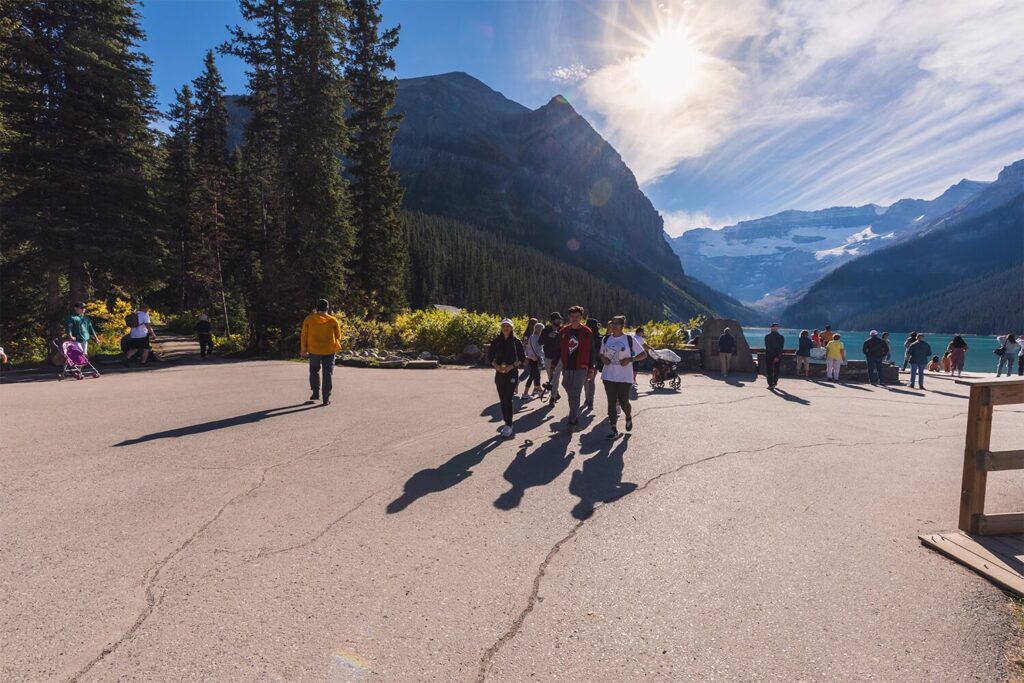
The trail starts at the left side of the lake, past the crowds of tourists.

Following signs for Saddleback or Saddle Mountain. The branch to the right here leads to Fairview Lookout, a short hike with spectacular views over Lake Louise.

Views are nonexistent as the trail heads steeply up except for the occasional glimpse of Fairview Mountain above.

The trail here was steeper than I expected, and the lack of views made the first section of trail a bit of a slog.
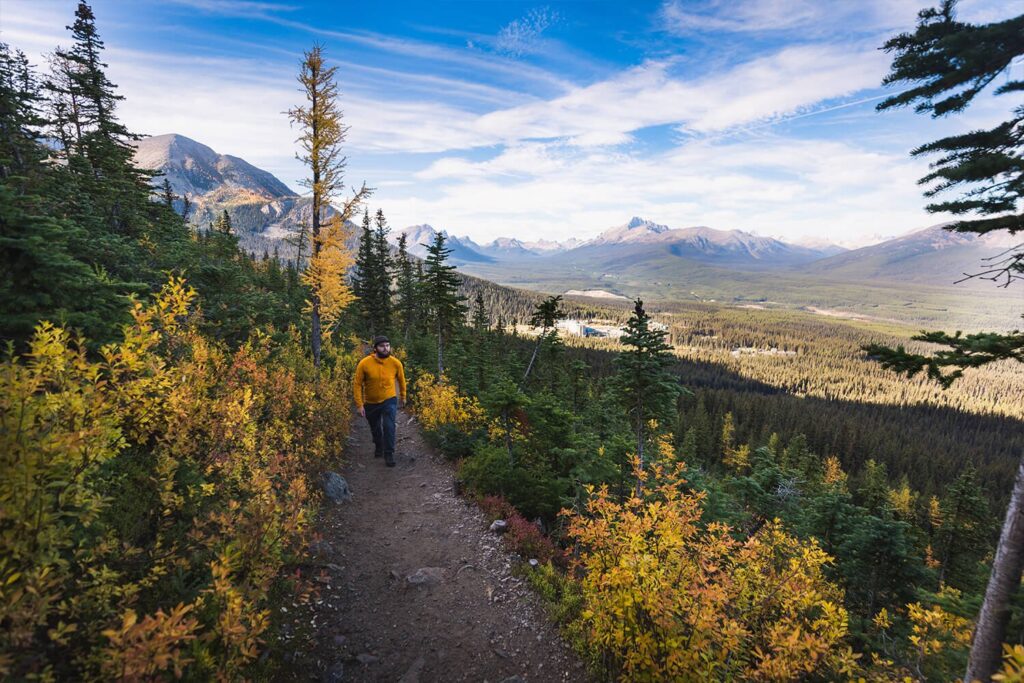
The first opens up and the first glimpse of views down into the Bow Valley below are spectacular.
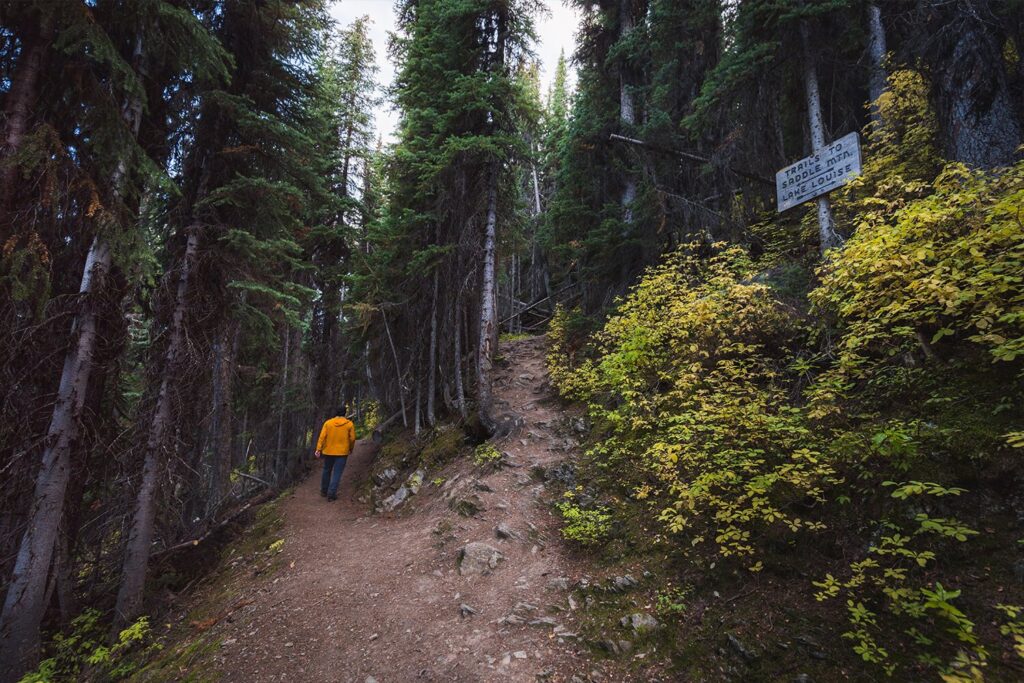
The main trail on the left switchbacks up while the trail on the right is just a steep unofficial shortcut.

Saddle Mountain comes into view, as does the incredible golden larch forest beneath the peak.

The trail through the larch forest has unfortunately become quite braided from disrespectful hikers creating shortcuts and trampling the hillside. Stay on the path.

Gorgeous Mt Temple, Sheol Mountain, and Haddo Peak coming into view on the other side of the pass.
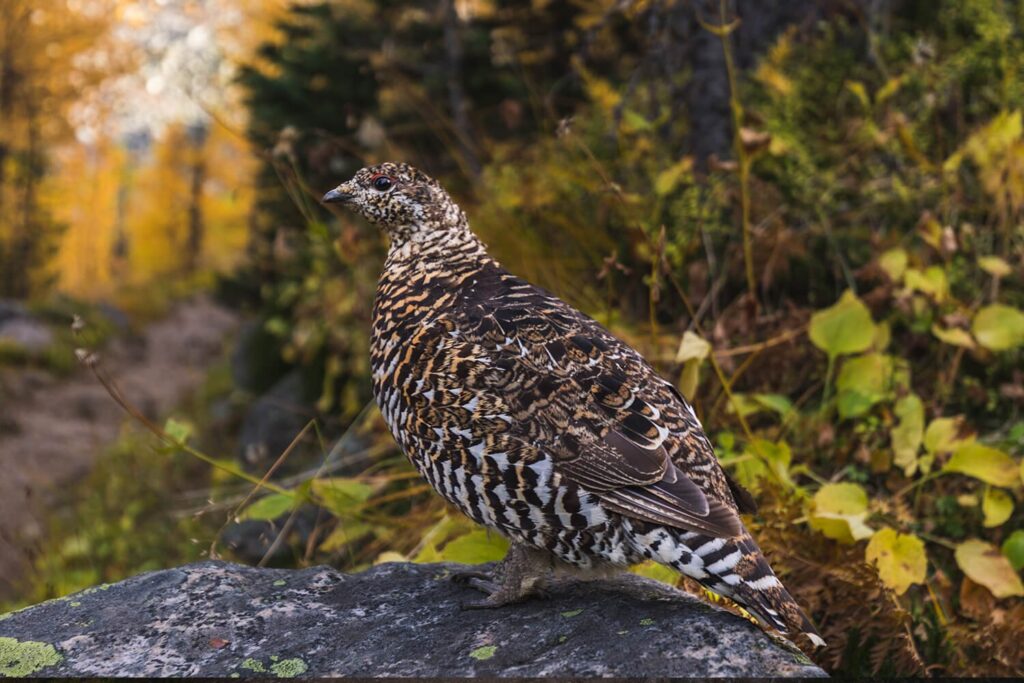
Spruce grouse in Banff are unafraid of humans and will often get close enough for you to take a photo. Still, it’s never okay to feed wild animals.
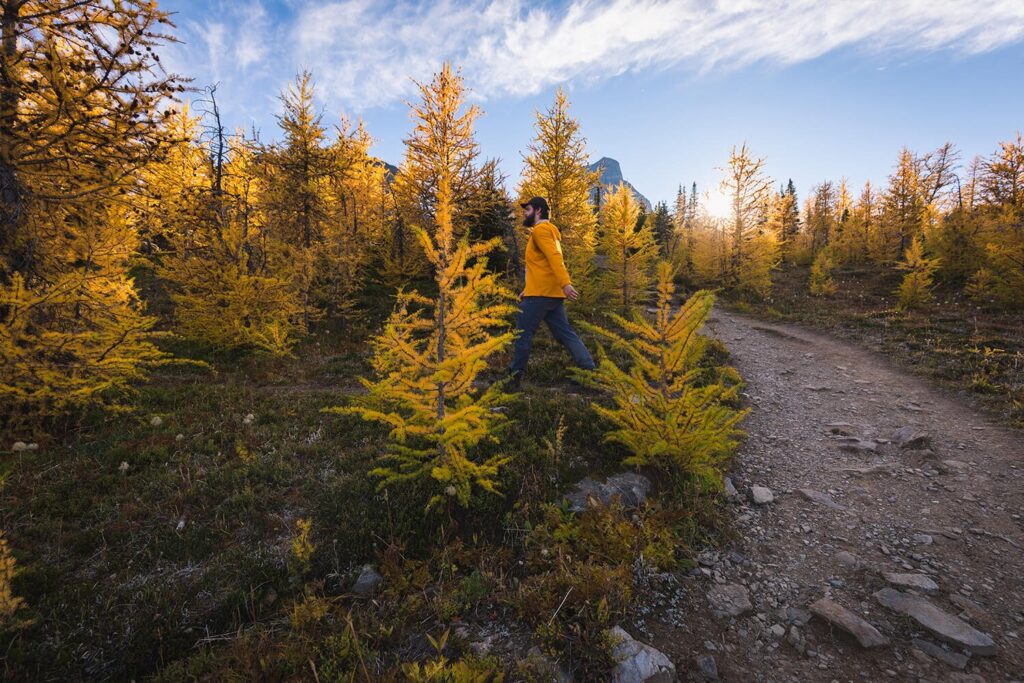
Right before the top of the pass, a small easy to miss trail branches off to the left. If you make it all the way to the end of the trail up the pass you’ve gone too far – just go back down the hill slightly and you’ll see it.
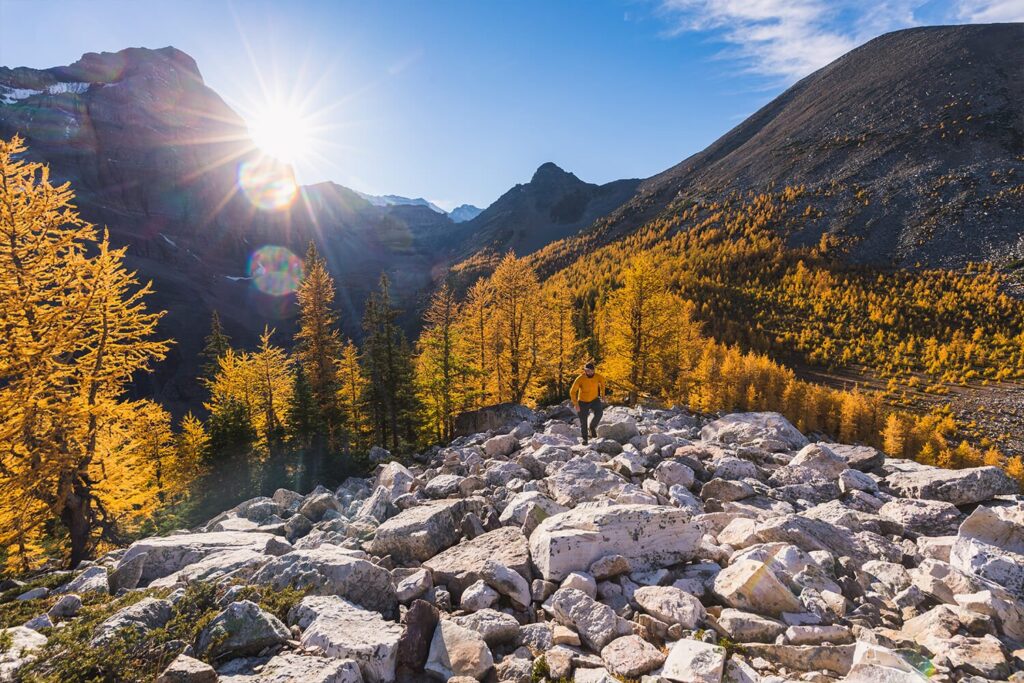
There is a bit of a faint trail up the boulders, but mostly you’re picking whatever route looks best to you. Fairview Mountain is at right.

Incredible views down into Paradise Valley and of Little Mt Temple and Mt Temple. Lake Annette can be seen below Mt Temple if you look closely.
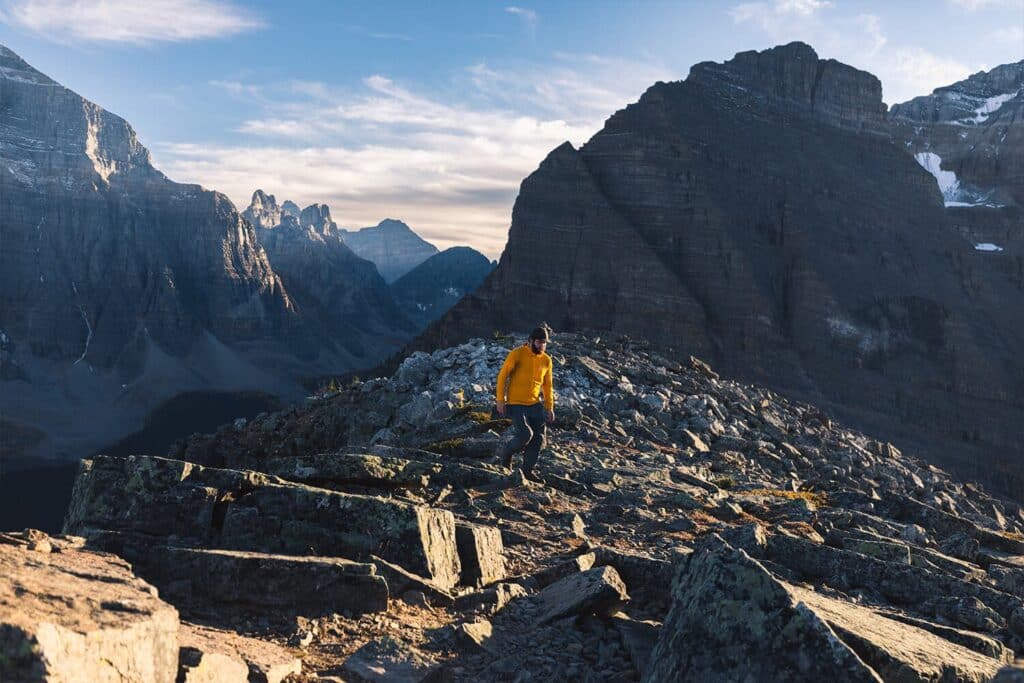
Making my past a meaningless cairn and across the top of Saddle Mountain to the true summit, marked with a larger cairn.
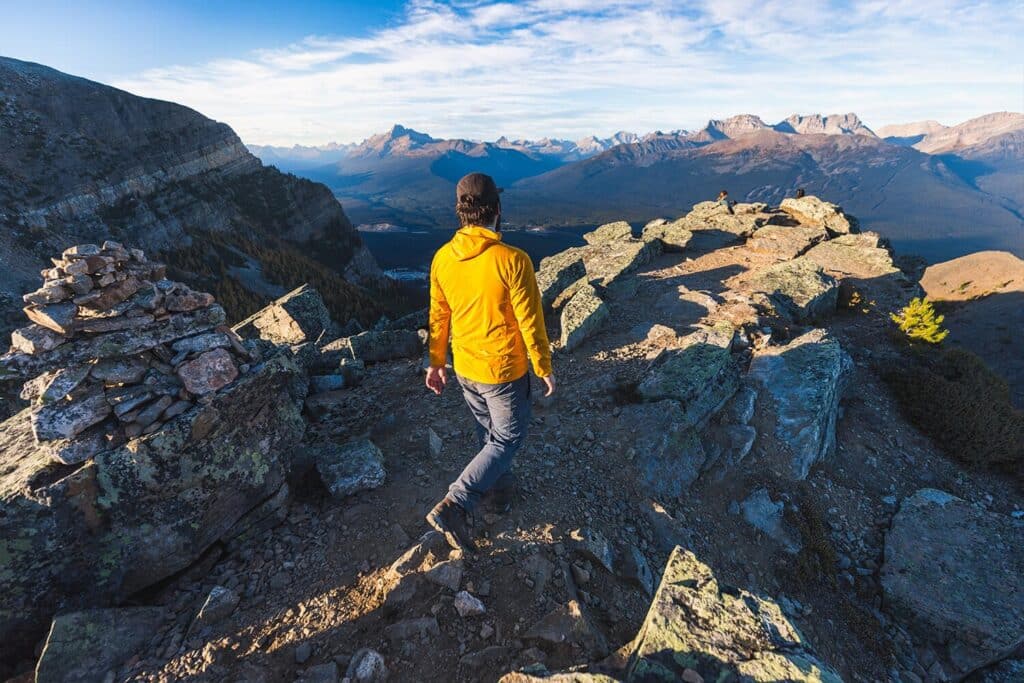
Views from the summit of Saddle Mountain.
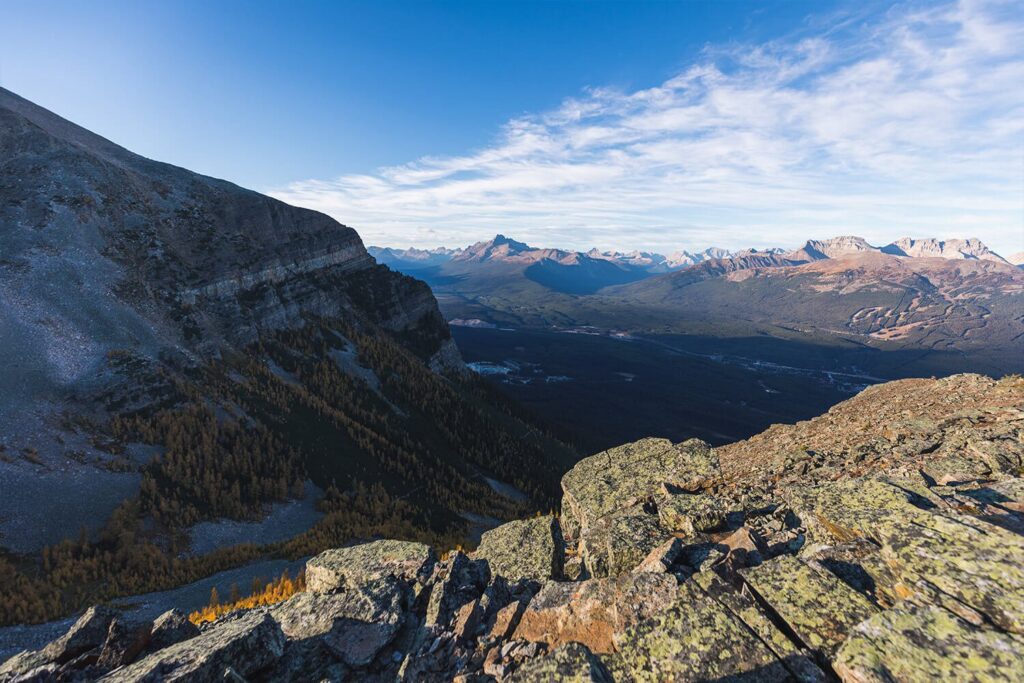
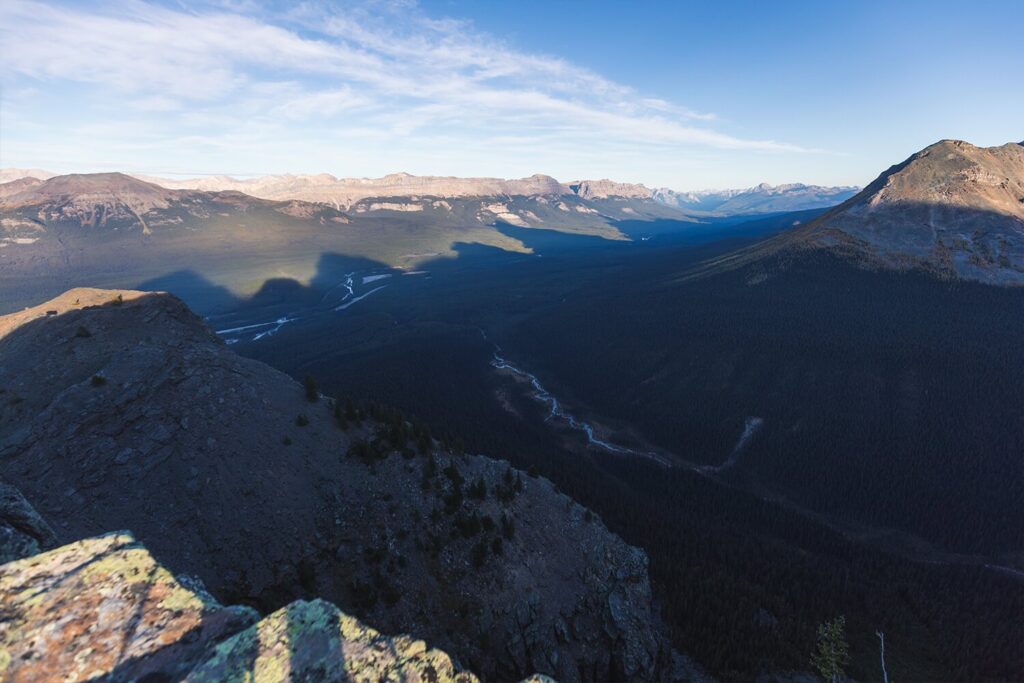
Recommended Hiking Gear



Water is a must whenever I’m hiking, especially if the sun is going to be out. My favourite water filter I’ve used is the Katadyn BeFree 0.6L, which unlike other water filters I’ve used packs up really small and lightweight. For hikes where I know there won’t be any readily available water sources along the way, I make sure to bring my own. The Hydrapak Stow 1L bottle is my go-to, for the same reason that it’s made of a soft plastic that folds up and doesn’t take up any more extra space than necessary in my pack. Finally, Aquatabs are another great option for purifying water, with one tablet being suitable for one litre of water. I previously used the Grayl water filter while travelling internationally, and though I found its hard body more convenient for day to day use and easier to drink from, it has a little too much bulk for my fast-and-light style of hiking.



The secret to all my photos of gorgeous sunset and sunrise mountaintop views? A lot of hiking in the dark. And let me speak from personal experience when I say that the last thing that you want to happen when hiking is to be caught in the dark without a headlamp. I used the Black Diamond Spot 400 for years and it worked great – until I lost it on top of a mountain somewhere. The only downside to it was having to worry about the batteries dying, though there’s also a slightly more expensive version that has a rechargeable battery. Nowadays I’m using the Petzl Actik Core, which is a bit pricier than the more budget-friendly Black Diamond, but is also brighter, more comfortable (in my opinion), and has a hybrid power system that is rechargeable but can also take AAA batteries if needed.
You won’t see me using trekking poles on shorter hikes often – but on long hikes and backpacking trips, as well as certain scrambles, they are an absolute lifesaver. I’ve invested in a high quality ultra-lightweight pair of MSR DynaLock Ascent carbon poles which, while pricey, I don’t regret one bit. If you’re not entirely sure how much use you’re going to get out of a pair of trekking poles, the best budget-friendly option would be the Trekology Trek Z 2.0. Amazon does sell a lot of cheaper Made in China-style trekking poles for cheaper, but these usually are much much heavier and not worth buying.
All the best and most long-lasting cables and power banks I’ve ever owned have been Anker. I once had a phone cable from them that lasted me over three years of daily use! That’s why I keep an Anker PowerCore Essential 20K power bank on me. Like many people I use my phone for a lot of stuff when hiking (checking in with family, using online maps, taking photos, flying my drone) so I like to be prepared for that low battery warning by having a backup power source on me just in case.



The only socks I ever buy for myself are from Darn Tough, and I almost always make sure to wear them when hiking. After years of having no problems only wearing these comfortable and rugged socks for hikes, I accidentally wore a pair of no-name socks on a hike last year and ended up with blisters on both feet. Safe to say I’m back to sticking with the Darn Tough. And the best part? They have a lifetime guarantee, meaning that if they ever wear out you can send them back for a brand new pair. For hiking footwear I go between a pair of lightweight approach shoes for quick and dirty mountain ascents or anything involving scrambling and more heavy-duty boots for longer treks. I’ve worn a couple different versions of the lightweight but super durable Arc’teryx Konseal FL 2 approach shoes for a few years now and am very impressed with the durability. I also really like the thick toecap that keeps me protected every time I stumble into a root or large rock. For longer, tougher, or muddier treks I rely on my LOWA Camino EVO GTX, which I find insanely comfortable and made of very high quality.



I wear my Ar’teryx Gamma Lightweight Pants on every single hike I go on, and on many days when I’m not hiking. After several years of abuse they are still holding together extraordinarily well, with only a few small holes from where I’ve fallen down and some slight stains from being repeatedly coated with mud. They’re lightweight, breathable, and super comfortable. For lightweight and breathable hiking tops I’m a big fan of both the Patagonia Capilene Shirt and the MEC Core Shirt. My Arc’teryx Squamish Hoody shows up in a lot of my photos. It’s super lightweight and packable, and does a great job of cutting the wind while also being pretty breathable. I also have an Arc’teryx Atom Hoody and Arc’teryx Beta LT that I pull out for cooler or wetter conditions.
I hope you enjoyed this guide to hiking Saddle Mountain near Lake Louise in Banff National Park! Feel free to leave any questions in the comment section below or to contact me directly via social media.

1 thought on “Saddle Mountain”